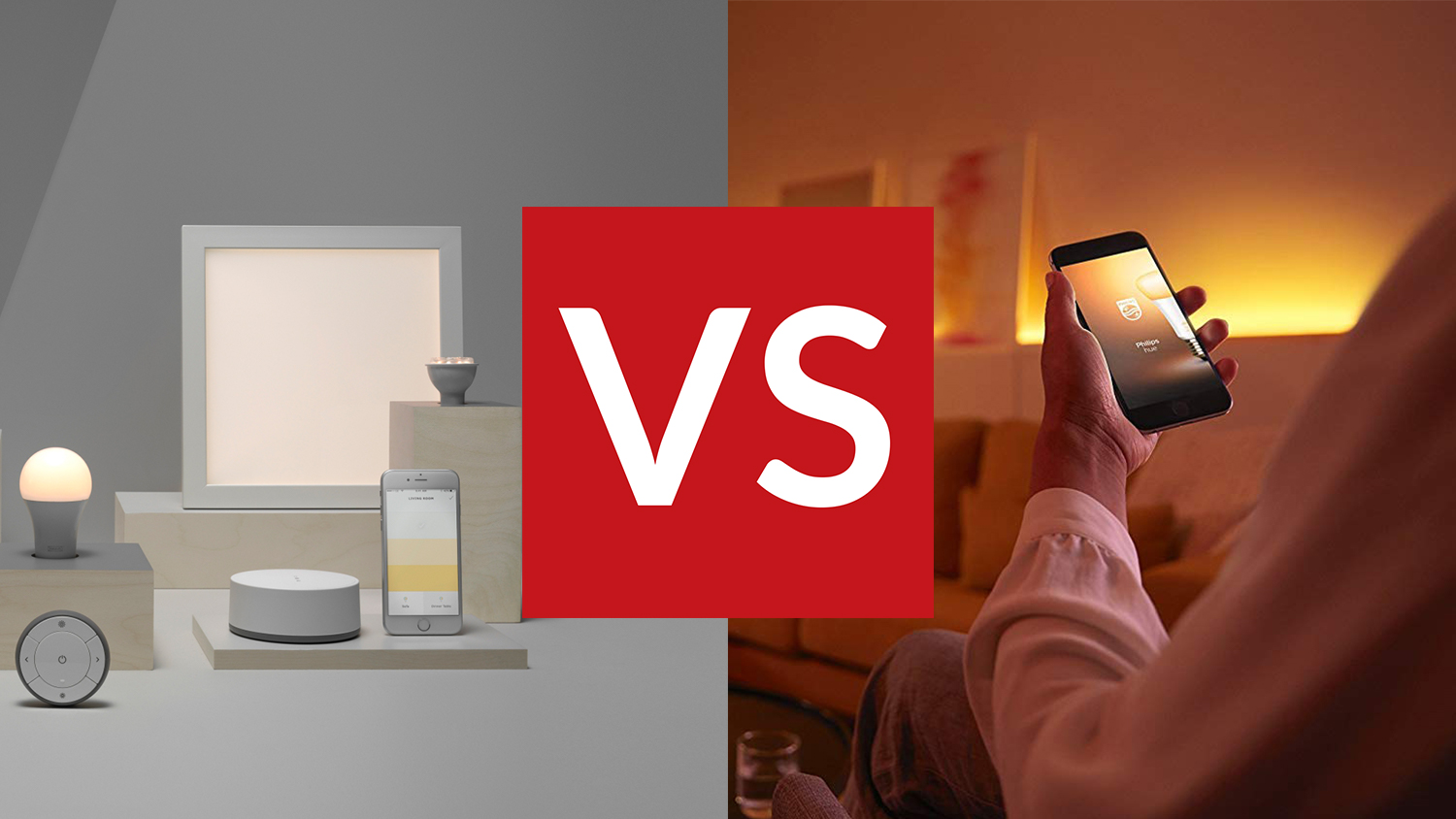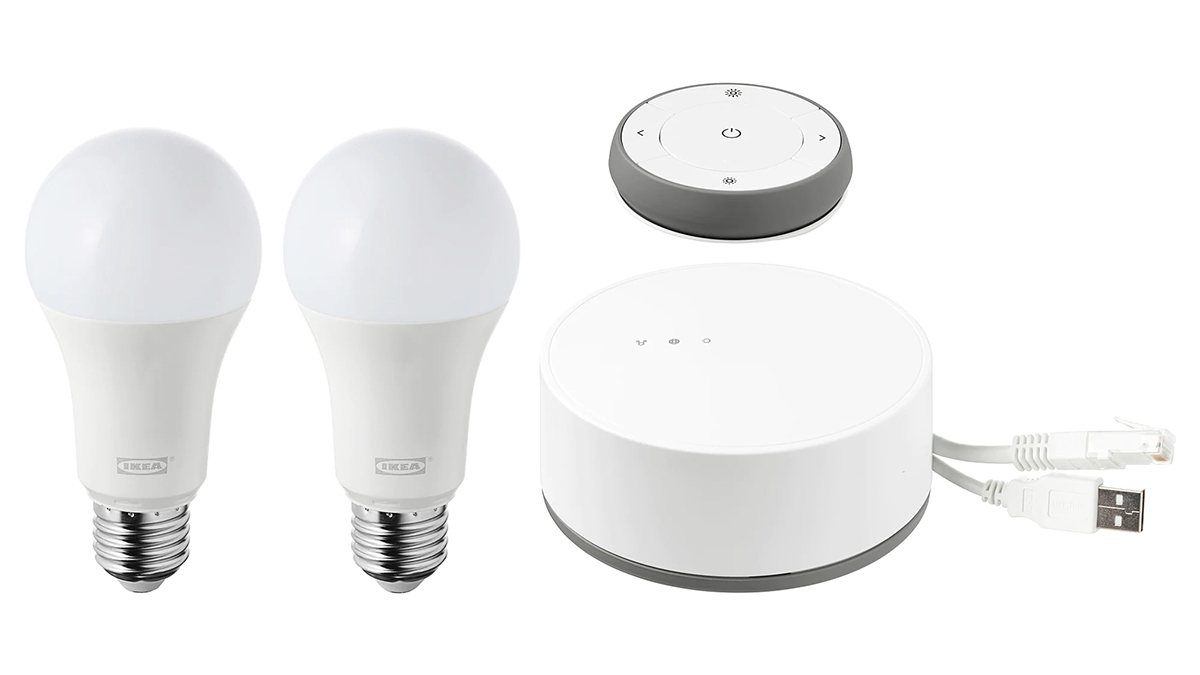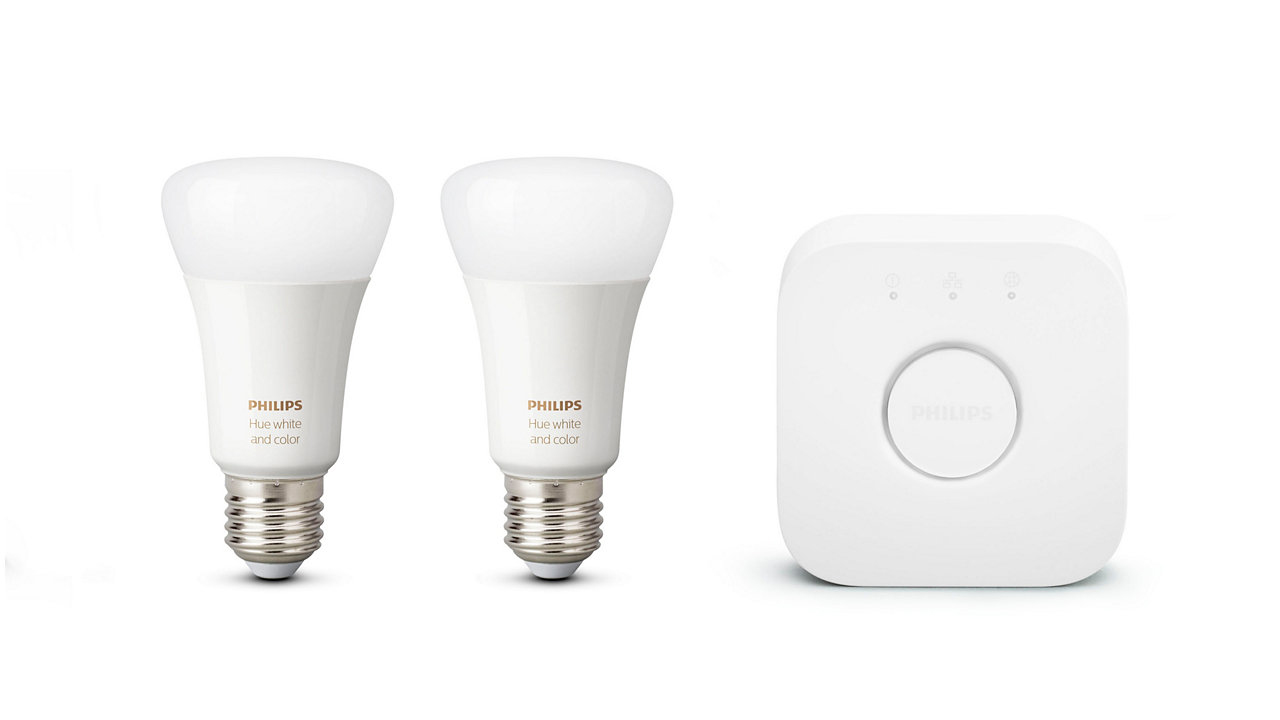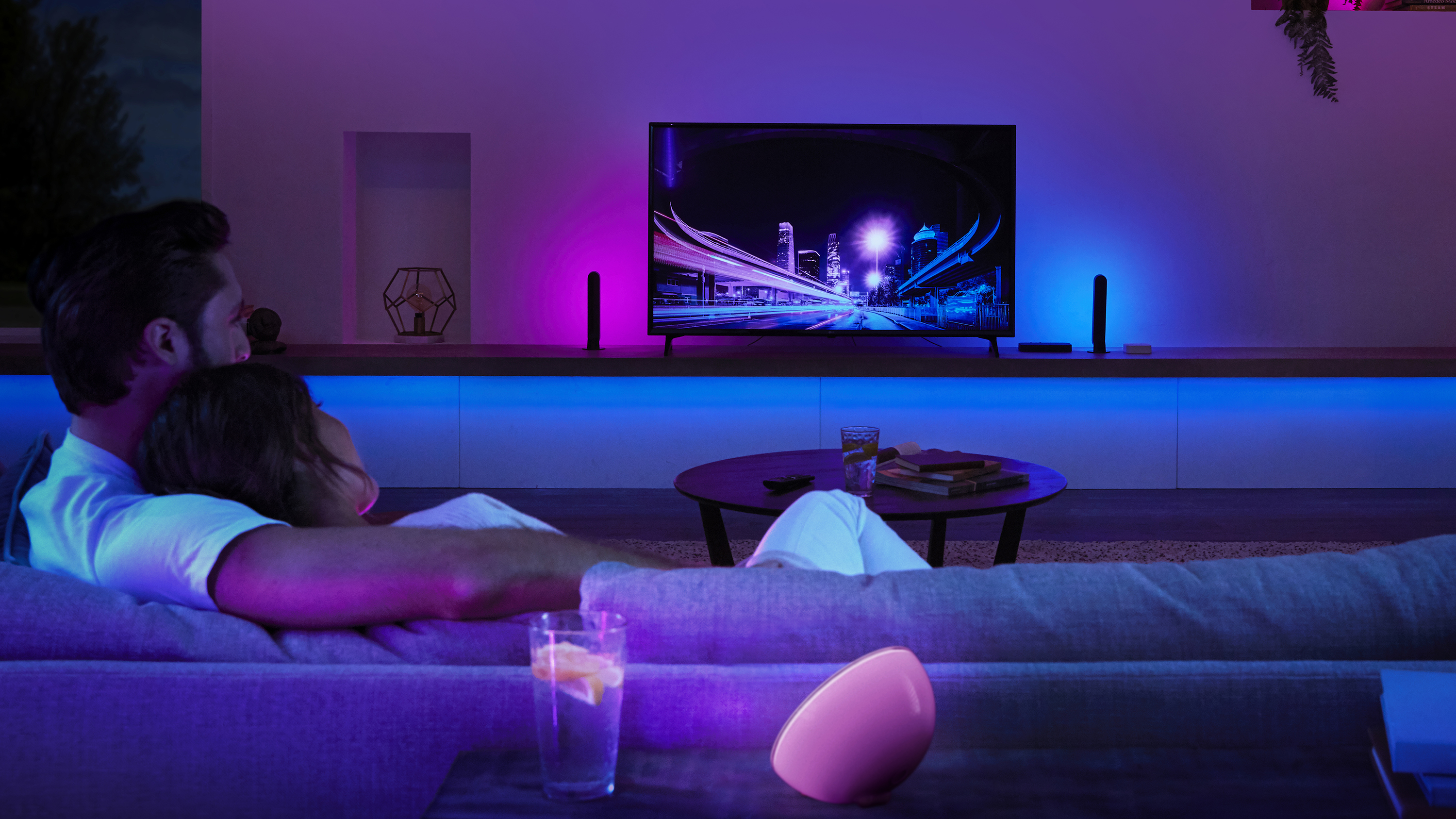Philips Hue vs Ikea Tradfri: which smart light option is best for you?
Does Ikea's fledgling smart lighting range have what it takes to topple Philips Hue in the battle of the smart bulb ecosystems?

The competition for best smart light is hotting up, with a whole host of new competitors reaching the market. The biggest name in smart lighting, Philips Hue, still arguably rules the roost, but there's no bigger name in home improvement than Ikea, and its own Tradfri line has made huge strides towards bringing smart lighting into far more homes.
But which is best? Can the upstart Swedish contender really topple the Dutch destroyer? It's not quite as straight a fight as that; the answer is going to depend on your home, the kind of lights you want to have around, and whether systems like LIFX aren't the right fit. Let's put them Hue and Tradfri head to head to see what you can expect.
- But what about LIFX? Here our Philips Hue vs LIFX guide
- Check out our definitive list of the best smart bulbs
- Find the best Philips Hue Starter Kit deals
- Or the best Philips Hue deals of all kinds
Philips Hue vs Ikea Tradfri: Design

Ikea Tradfri
If your only metric is the core lighbulb design, Philips wins the war here: its basic Hue bulbs have a far more interesting design than Ikea's stock Tradfri bulbs, which outwardly don't look very smart at all. But that's really only part of the story.
The Philips Hue range extends far beyond straightforward drop-in bulbs; there are light strips, wall illuminators, and light bars for use with TVs, all of which can be tweaked to hit just the right colour. There's a massive outdoor line, growing all the time, which gives you options for security and garden illumination. And Hue has plenty of accessories, too, from a few designs of dimmer switch to an official motion sensor.
The Tradfri line trends more towards home integration than feature illumination; full-colour bulbs have only ust hit the UK shelves, having been on sale elsewhere for a while, and they make up only a small portion of the bulbs available to you.
Tradfri includes standard LED bulbs in everything from E14 to E27 to GU10 configurations, with filament-style or classic frosted caps, though the RGB options are far more limited than those of Hue, encompassing just two bulbs. Then there's the extended family of the Tradfri: the Floalt light panel range, which can be automated in the same way, and Tradfri LED drivers, which give you access to smart control for shelf and cupboard lighting and, realistically, anything else you're able to plug into them.
Philips Hue vs Ikea Tradfri: Features

Philips Hue
Philips' obvious strength is its colour, which plays a far bigger part in its lighting experience than it does in Ikea's. Hue gives you a whole host of options for atmospheric, er, hues, as well as ways to integrate its colour-changing bulbs and modules with your media. That's not to say everything Hue is coloured – there are plenty of temperature-changing white hardware in its line – but that's one of its key advantages here. Its bulbs also tend to be rated for higher lumen output, meaning you'll get a slightly higher maximum brightness out of them.
Get all the latest news, reviews, deals and buying guides on gorgeous tech, home and active products from the T3 experts
What Tradfri generally lacks in colour, it makes up for in simplicity and price; if you're looking to introduce smart lighting to a technophobe, Ikea's lights are probably the right choice. Individual smart bulbs run as cheap as £6/$9, which is impressive. They're not all super-capable – the £6/$9 400 lumen GU10 bulb is dimmable, but warm white only – but they're plentiful, and can be hooked up to an easy-to-use remote control which bypasses any app.
Both ecosystems, in fact, allow you to use them independently of a hub: Hue bulbs (recent ones, at least) include a Bluetooth module, so you can tweak individual bulbs which might be out of range of the main network or (-f you're feeling especially masochistic) use them without the hub. Both can work with motion sensors and their own remote controls.
Of course, using a hub opens up a whole world more possibilities, and both systems offer their own in the form of the Tradfri Gateway and Hue Bridge. It's important to note that both systems employ the Zigbee protocol to deal with remote connections, which makes each bulb a node in a little low-speed long-distance mesh network. This gives them more potential range than a Wi-Fi competitor such as LIFX; Zigbee also means that, with some persuasion, Ikea Tradfri lights can work with the Hue Bridge. Both can also be convinced to work with something like the Amazon Echo Plus' built-in Zigbee hub, so you have options.
That's kind of a good thing, if we're honest. If Tradfri has one big failing, it's that Gateway: we've found it to be quite unreliable over the years, a pain to set up, and a little more restrictive than we'd like. Philips' Hue Bridge is a much better experience, although we have to dock the company a few points for unceremoniously retiring its first-gen Bridge and leaving many people forced to shell out on an upgrade – we hope that won't be a situation that repeats itself.
Philips Hue vs Ikea Tradfri: Apps

Philips Hue
This is a category where Hue has a commanding lead, and we don't suspect Ikea will be troubling it any time soon. The Tradfri app is functional enough once you've gone through the rigmarole of getting it working, which can take a while since Ikea's firmware updates aren't exactly quick. But it's unspectacular, and not laid out in the best way.
Hue, on the other hand, is on the third major revision of its app, and it's a shining example of user-friendly design in action. It makes it easy to group lights, set up automations, adjust colours and apply certain effects, and does so in a very well presented and straightforward manner.
Both systems can also be accessed through each of the major smart home platforms – Alexa, Google Home and Apple HomeKit – and this helps to mean that weakness of the Tradfri is less important, though only Philips Hue works with the DIY automations of IFTTT.
If you don't like either take on their apps, you can pull off most lighting functions through the smart home app of your choice, and there are specific third-party lighting control apps on both Android and iOS app stores that can add cool features that you wouldn't find in either Hue or Tradfri.
Philips Hue vs Ikea Tradfri: Verdict

Ikea Tradfri
It might seem like Hue is a slam dunk winner in this conflict, but that's really not the case. Tradfri has a lot going for it: it's cheap, it's easy, and for integrations with furniture or whole-house implementation it's probably the best smart lighting platform full stop.
Both demand an extra hub to get the most out of them, both have good smart assistant support, and both have a very wide range of bulb types and feature lights to choose from.
Philips does start to edge Ikea out when it comes to colour – there's a whole lot more RGB options in its range than the measly couple of bulbs Ikea can offer – and in terms of control, with a far superior app and neat extras like the Hue Play allowing you to add a new dimension to your lighting.
Hue's maturity, control and breadth absolutely makes it the better smart lighting platform overall – but Tradfri might be the better choice for you, particularly if you need some of its unique options such as lighting panels for cupboards, and if you want to keep the price down.
- Prep for winter with the best smart thermostats
- Meet the best security cameras
- And the best outdoor wireless security cameras
- Or the best cheap security cameras

T3 magazine's own Gadget Guru is a 25-year veteran of the tech writing wars, and has the scars to prove it. He's written for the UK's biggest technology publications, and knows everything from smart doorbell voltage needs to how to bend Windows to his every whim.
